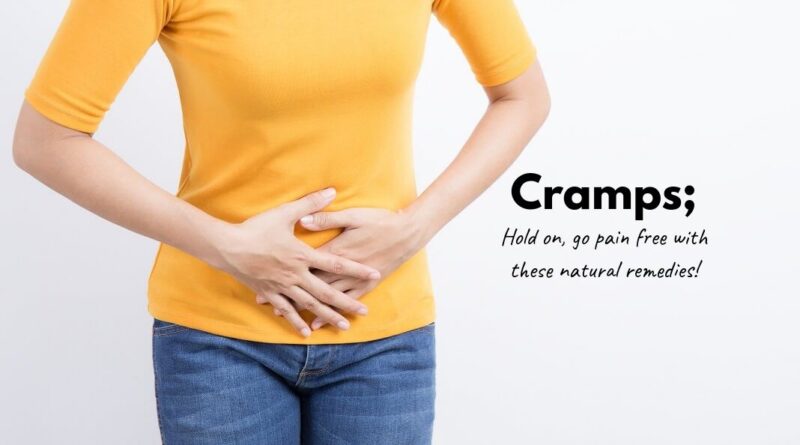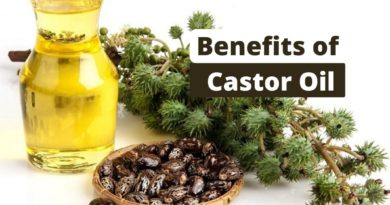Suffering from Cramps? Here’s What You Can Do to Reduce the Pain
Being emotional and suffering from cramps are common symptoms before and after your period. This is called PMS, Premenstrual Syndrome, and it’s easily treatable. The cramps don’t last long, and after 1-2 days, the discomfort is as good as gone. But, it’s not necessary to deal with cramps, even for a short time, if you can use some simple home remedies for relieving cramps.
Table of Contents
Conditions That Cause Cramps
During your cycle, the uterus contracts to squeeze the lining from the uterine wall. These uterine contractions cause cramps. The cramps cause throbbing pain in your lower belly, which is not only painful but also uncomfortable. Cramps are medically known as dysmenorrhea, and menstrual cramps fall under the primary dysmenorrhea category, which is the most common form of period pain.
According to Women’s Health Concern, 80% of women get cramps during periods at least once in their lifetime. Most often, cramps go away as you grow older, but if you have severe cramps, it’s best to consult your doctor. Severe cramps can be a symptom of fibroid, pelvic inflammatory disease, or endometriosis, according to a report.
So, how to relieve cramps? Well, there are a lot of home remedies, from essential oils to foods, that can help you deal with the pain. Below are some simple, natural ways to relieve cramps.
Did You Know!
| Prostaglandins are the chemical that causes contractions in the uterus, which leads to cramps. |
Ways to Relieve Cramps Naturally
When the question is how to get rid of cramps, there are some foods and home remedies that can help you assuage the discomfort associated with cramps to a large extent if you follow them religiously.
- Foods
- Essential Oils
- Alternative Remedies
- Supplements
CURE 1: Foods for Cramp
1. Broccoli

Broccoli is rich in iron and fiber, making it the top food for relieving cramps. It also contains calcium and vitamins A, C, and E. These nutrients help with lower abdominal pain and cramps, and they help regulate your estrogen levels, and digestive system.
Try to include this vegetable in your daily diet. It has a natural flavor that makes it an excellent addition to a salad, or it can be used as an ingredient in a curry. A bowl of steamed broccoli is sufficient to get rid of cramps.
2. Pumpkin seeds
A handful of pumpkin seeds as a midday snack has a lot of health benefits. Pumpkin seeds can contribute to 75% of the required daily intake of magnesium and 85% of the required intake for manganese. Magnesium can fight water retention, and thus reduces bloating.
Not to mention that it also uplifts your mood. The other nutrients you can get from pumpkin seeds are zinc, fiber, and omega-3 fatty acids. Legumes are also a great source of magnesium, along with artichoke, leafy greens, and bananas, these can be healthy snacks.
3. Water
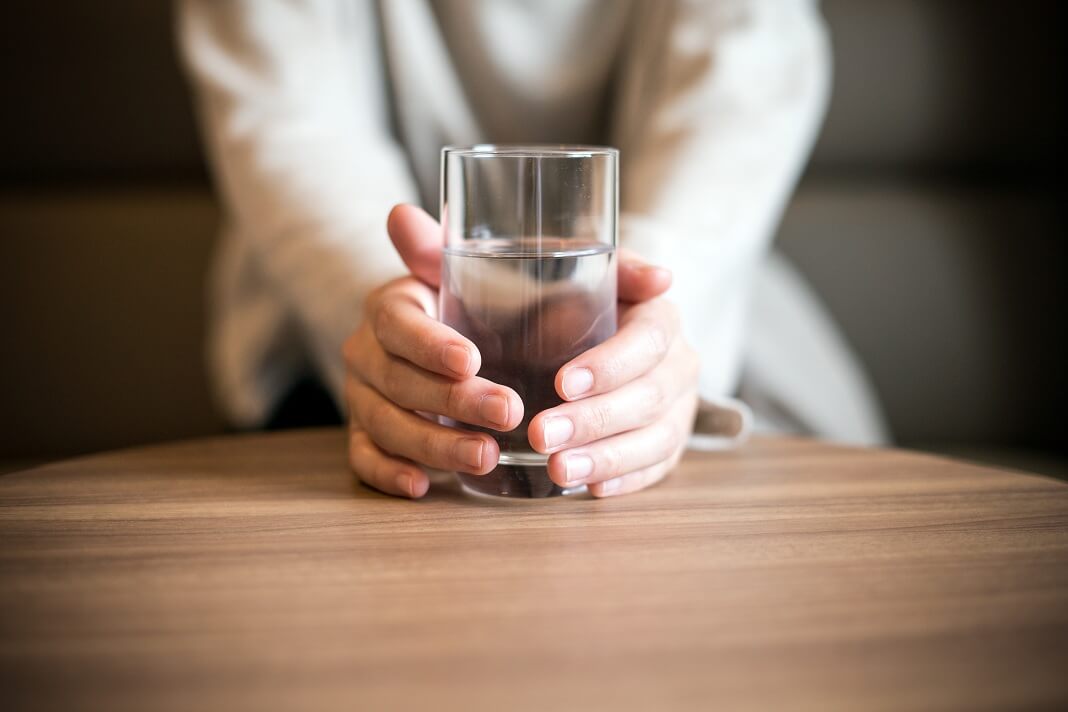
Drinking too much water when you already feel bloated might not seem like a good idea, but staying hydrated is the best way to stop cramps. Also, water reduces bloating, not increase it. A glass of warm water will soothe your inner muscles and help them relax.
Your cramps will worsen if you are dehydrated. So, try to drink at least 6-8 glasses of water every day to get cramp relief. Liquids, in general, improve blood flow in your body. But, not every liquid is healthy, like preserved fruit juices, which contain more sugar and fewer nutrients.
4. Olive oil
Olive oil has a lot of health benefits, and it helps relieve cramps too. Using extra virgin olive oil in cooking can help reduce inflammation as it contains oleocanthal, which fights inflammation-producing molecules in your body.
5. Ginger
Ginger is well-known for its warming properties. And, its anti-inflammatory properties will also prevent the build-up of prostaglandins, a chemical responsible for muscle contractions.
A study conducted in 2016 compared ginger to a nonsteroidal anti-inflammatory drug for treating cramps, and ginger was proven to be more effective for reducing cramps. You can include ginger in your daily meal, or add some grated ginger for cramp to your tea, and drink it at least twice a day
6. Chamomile

Chamomile has a soothing effect on the nerves, which will help reduce muscle contractions. It has anti-inflammatory, just like ginger, and can help prevent the build-up of inflammatory chemicals in the body. It can also increase the levels of glycine in your body, which is a chemical that prevents muscle spasms and acts as a nerve relaxant. A cup of Chamomile for cramp and infused tea twice daily has shown to reduce it effectively.
7. Eggs
Eggs have a variety of nutrients, and including just one egg in your daily meal can give your body a boost of proteins, calcium, vitamin D, B6 and E, and minerals. All these nutrients, in one way or the other, help reduce cramps too. Studies show that vitamins control the chemicals that cause PMS, thus regulating hormones. Including vitamin B in your diet can reduce many PMS symptoms, like bloating and depression.
8. Peanuts
Another food rich in magnesium and vitamin B, peanuts is an excellent food source to relieve cramps. Apart from calcium, magnesium is the topmost nutrient to help reduce cramps. It regulates the production of serotonin to your brain, which is a feel-good chemical. Peanuts are a good source of magnesium. They make a healthy snack. So, unless you are allergic to these nuts, it’s time to start gorging on peanuts to keep the PMS symptoms at bay.
9. Bananas
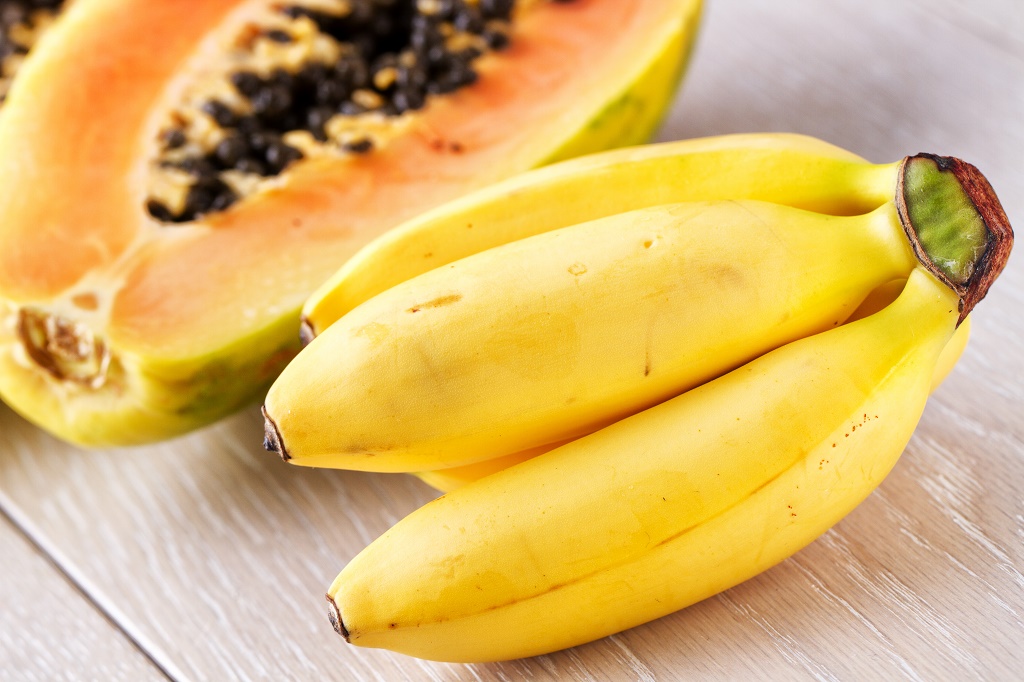
Potassium can reduce water retention and bloating, the two most common symptoms of PMS. A deficiency in potassium could also be the reason for cramps. Bananas for cramps are the best source of potassium. They are also rich in fiber, which helps relax your muscles. Having a single banana can replenish the potassium you lose in an hour of exercise, which is why experts recommend having a banana before a workout. Oranges are also a good source of potassium.
10. Chocolate
You don’t really need a reason for eating chocolate, but here’s one anyway, it contains magnesium, and also increases energy. And, it also has endorphins, which are happy hormones, and can improve your mood. But, not just any processed chocolate has enough magnesium. Not to mention that they make excellent comfort food. So, when you are dealing with cramps, a good quality, organic dark chocolate is the best. If you’re not a fan of dark chocolate, then try to get ones with at least 65% of cacao.
11. Lemons
Citrus-rich foods all help alleviate mood swings and bloating. This is because they are rich in vitamins and fiber. Also, they contain a lot of water, so the nutrients from them will get absorbed into your bloodstream quicker. Some lemonade with less sugar and more lemon juice is a good source of getting sufficient levels of citrus in your body.
12. Watermelons and Plums
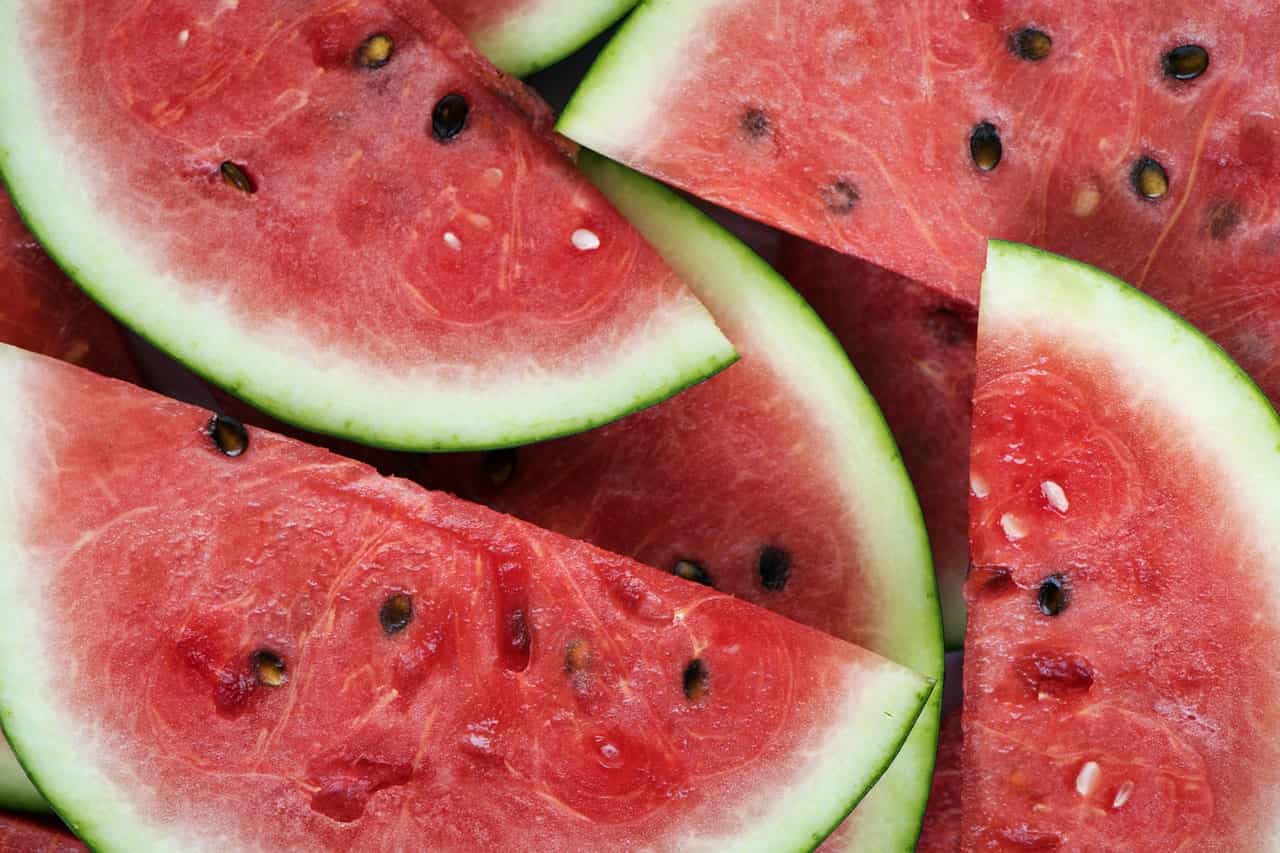
Like lemons, these fruits also contain a lot of water, making them helpful with bloating. The natural sugars in these fruits will compensate for the sugar your body loses during the period. The vitamins in these fruits help reduce cramps and also help increase the water content in your body.
13. Salmon
Coldwater fish are an excellent source of omega-3s. A coldwater fish like salmon is one the healthiest and also a unique way to reduce cramps. The antioxidant and anti-inflammatory properties in omega-3s relax the uterus muscles and prevent inflammatory chemicals from increasing in your body. Salmon sushi, salmon rolls, or plain grilled salmon will get you all the essential nutrients. Vitamin B and protein in salmon increases your energy.
14. Yogurt
Like eggs, yogurt is an excellent source of protein and calcium. Apart from being a high-nutrition snack, it delivers 25% of the calcium required by your body daily. Studies have proven that a calcium-rich diet can reduce the chance of developing PMS cramps by over 30%. Opt for low-fat yogurt to make it a healthier snack.
15. Kiwi
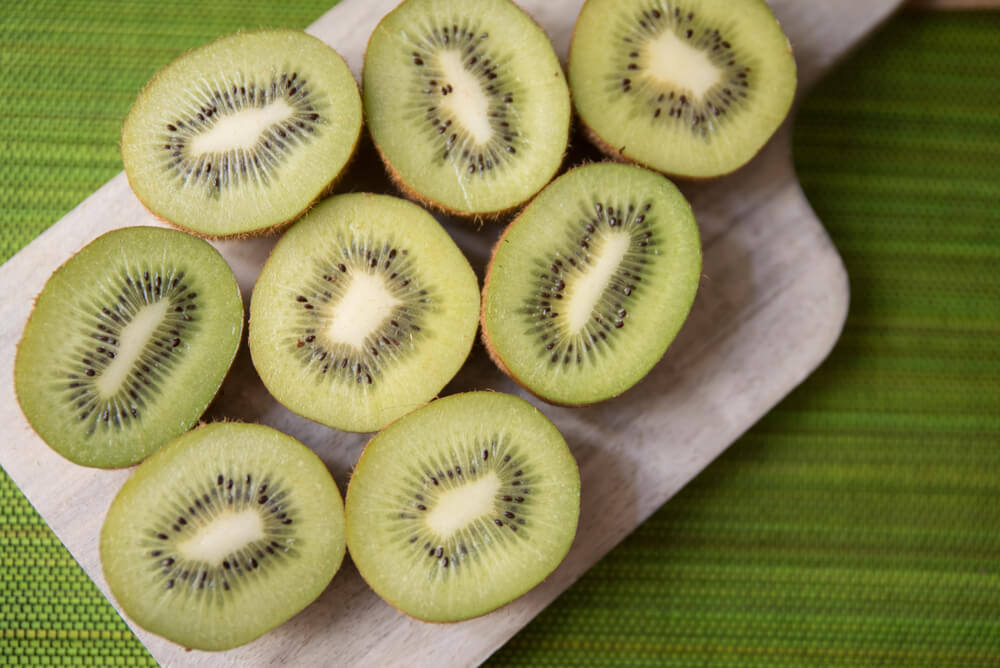
Kiwi is rich in the enzyme actinidin, which helps in digesting proteins, thus preventing bloating. It also contains fiber which can help to cure cramps. A banana kiwi smoothie makes a healthy start to your day. You can also add in some pineapple for a healthy dose of the anti-inflammatory enzyme, bromelain. These three ingredients, whether in a smoothie or a fruit bowl, are a sure-shot way to reduce cramps.
16. Oats
We all know that oats are rich in fiber, they are full of fiber, so no matter how you choose to take your oats, you are going to get your fiber intake to deal with those cramps. A granola bar or oatmeal, or oatmeal cookie make a healthy, and quick breakfast. Oats also contain high doses of zinc and magnesium.
17. Hummus
The essential ingredients in hummus are chickpea, olive oil, lemon, and ginger, all of which help reduce cramps. So, if you don’t already love the dip, here’s your chance to fall in love with it. Also, hummus itself contains fiber, which helps fight cramps. Just make sure that you are dipping healthy foods like carrots or celery, which can provide cramp relief, rather than nachos or chips.
18. Berries

Berries contain high levels of antioxidants, minerals, and vitamins that are essential for protecting your body’s cells, and uplifting your mood.
The antioxidants in them also fight uterus muscle spasms. Berries taste lovely, whether you add it on your pancakes or in your power-packed smoothie. Especially, strawberries and blueberries, help balance out the hormonal changes in your body, leading to lessen cramps.
19. Leafy Greens
Leafy greens are another great source of calcium, and magnesium, which means they will help alleviate cramps. Add a bowl of leafy green vegetables to your daily diet. Even beans play an important role in reducing cramps.
20. Flaxseed and Walnut
Both flaxseed and walnuts are a great source of omega-3s, which will reduce cramps. Walnuts and almonds are also a rich source of fiber.
CURE 2: Essential Oils for Cramps
Essential oils can help relax muscles in various ways.
1. Lavender Oil
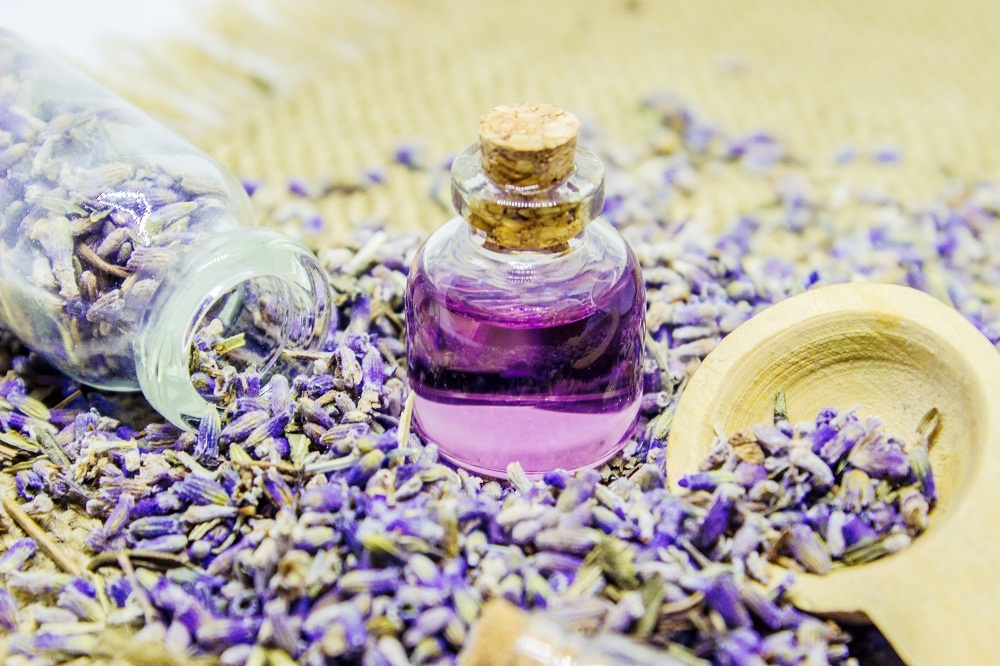
Lavender is known for its soothing properties which aid in sleep. But, this essential oil also works as a muscle relaxant, thus relieving cramps. The calming properties of lavender encourage the muscles to let go. This releases tension and improves blood flow.
More regulated blood flow will decrease discomfort. You can add a few drops of lavender oil in your bath water along with Epsom salt, or you can massage the lavender oil directly on your lower belly.
2. Clary Sage Oil
Another essential oil that aids in calmness is clary sage, an excellent way to get your muscles to release tension, thus improving blood flow and reducing cramps. Also, clary sage can help balance your hormones, which could be the cause of your cramps.
Add some drops of clary sage in your bath water or gently massage the oil directly on your skin where it hurts.
3. Deep Blue Oil
A unique combination of cold and warm, deep blue oil works like no other when it comes to discomfort from cramps. The oil is warm when it touches your skin and then cools down instantly, providing a soothing feeling. This also helps relax the muscles.
4. Eucalyptus Oil
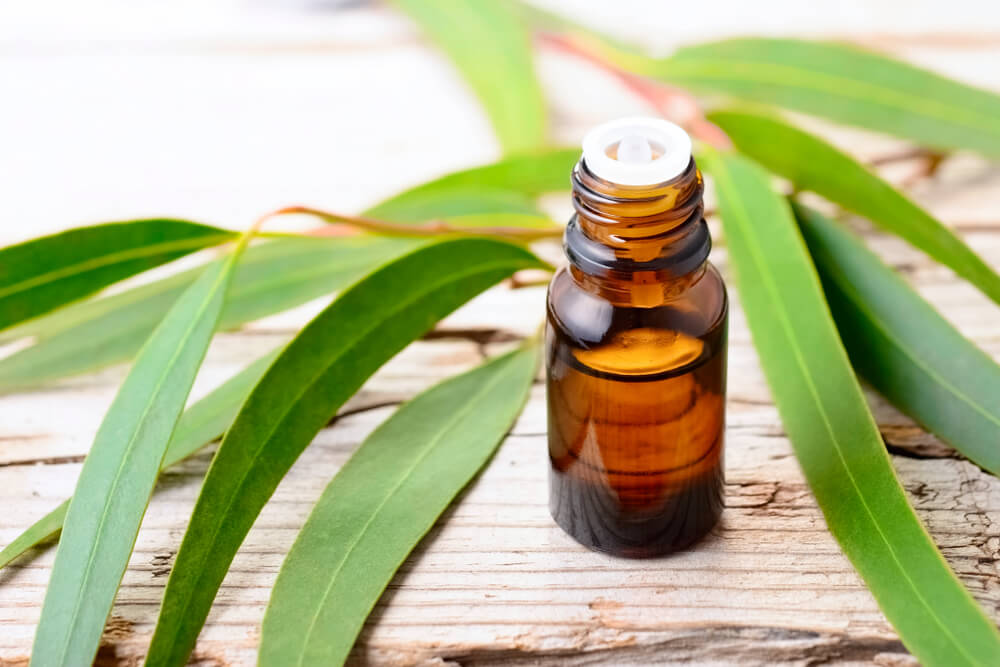
This oil is a primary ingredient in many cosmetics globally, and it works wonders on easing cramps. It has anti-inflammatory properties that can ease aches and muscle spasms. Gently massage a few drops of eucalyptus oil on your abdomen to cure cramps.
5. Peppermint Oil
Peppermint oil is known as an instant energizer, which can be a boon when you don’t have time to rest to ease the cramps. Its minty scent is also a great refresher. This bright scent also helps fight nausea. You can apply the peppermint oil directly on the abdomen and massage it, but if your skin is sensitive, add it to a carrier oil like coconut oil before applying on the skin.
6. Grapefruit Oil
Just like citrus fruits, citrus oils also have energizing properties. Massaging the oil onto your skin in the morning will not just give you a burst of energy, but also release the tension in your muscles. Its fruity scent also doubles as a great perfume. Another effective citrus-based oil is sweet orange, which has the same properties and healing abilities as grapefruit oil.
7. Cypress Oil
Considered as a warm oil, cypress oil provides instant relief to muscles, thus easing the cramps. It also improves circulation and soothes aches. Its astringent properties also flush out the toxins and help water retention. Mix a few drops of cypress oil and grapefruit oil, and apply it to your lower belly.
8. Geranium Oil
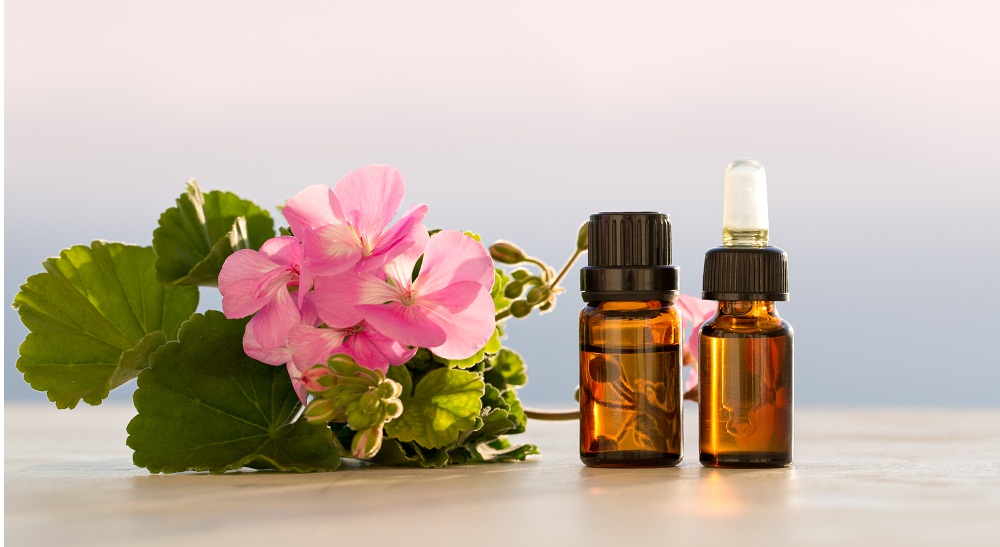
Many refer to it as a “women’s oil,” since it helps regulate hormone levels. It also contains pain-relieving properties that can help treat cramps. And it has a soothing, uplifting scent that will boost your mood. Mix the oil with coconut or jojoba oil, and apply it on the aching area. You can also add a few drops of geranium oil to your air freshener for a mood booster.
9. Rose Oil
This cosmetic oil has a variety of benefits, and one of them includes a toning effect on the uterus that relieves muscle cramps. It’s calming scent also helps reduce anger, and irritability, both common symptoms of PMS. Mix 2-3 drops rose oil, and 5-6 drops almond oil, and gently massage on your lower belly.
10. Ylang-Ylang
The sedative properties of this oil make it a popular ingredient in aromatherapy products that focuses on aiding sleep. But, this can also alleviate stress and help relax the muscles.
Ylang-Ylang is a potent oil, and shouldn’t be applied directly to the skin. Instead, mix it with coconut oil and massage onto the skin. Alternatively, you can also add a few drops of the oil to your moisturizer, and then apply it on the skin.
Also Read: The Best Essential Oils to Treat Stress
CURE 3: Alternative & Natural Remedies for Cramps
Some other remedies to help reduce the pain include:
1. Acupuncture
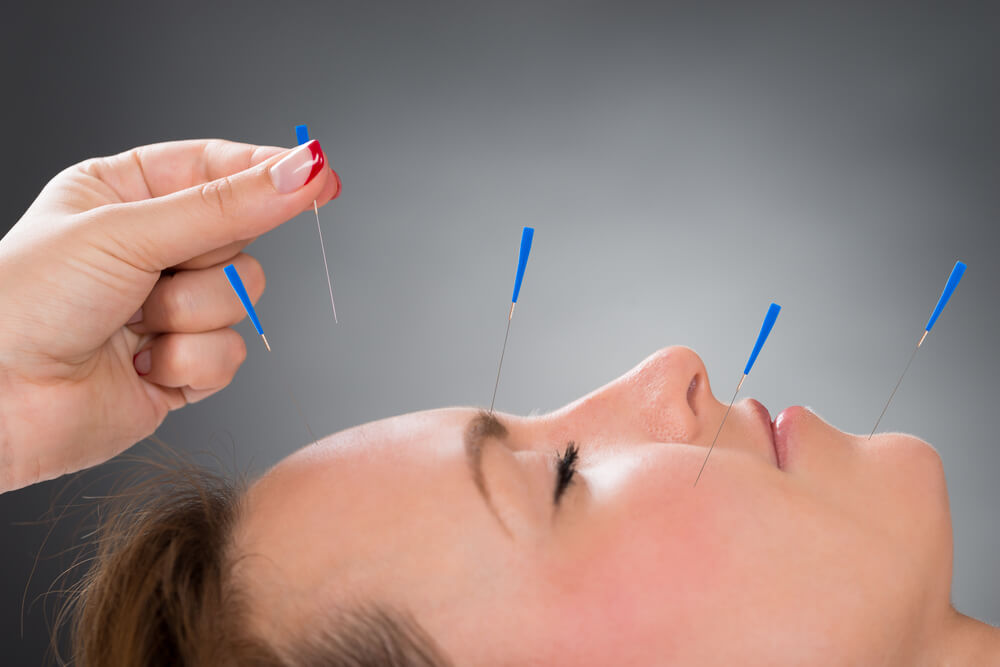
Acupuncture is an ancient Chinese therapy that focuses on treating pain by targeting particular pressure points and inserting medicinal needles into the points. During this process, your brain releases endorphins, a chemical that is primarily responsible for relieving pain. Acupuncture is a natural process which will resolve the cause of the pain, and cramps rather than focusing just on the symptoms, as most over-the-counter medications do.
2. Acupressure
Acupressure is another ancient remedy, but unlike acupuncture, in this therapy, the pressure is applied to specific pressure points rather than inserting needles. This pressure releases the body’s natural pain-relieving chemicals. The pressure also stimulates the autonomic nervous system, resulting in relaxing your muscles and cramp relief.
3. Applying Heat
A popular remedy for cramps is to apply a heating pad on the area of the pain. The warmth helps relax your muscles, and reduce contractions. Many women find that applying a heating pad to the lower back helps just as much. Studies have shown that a topically applied heating pad is as effective as ibuprofen to reduce cramps.
4. Massage

The purpose of a massage is to relax your muscles, and getting a massage when you have cramps is an excellent way to relieve cramps. If going to the spa or getting a masseuse to do your massage is not an option, you can do the massage yourself. Just take any of your favorite essential oil, a soothing scent like lavender, for instance, and gently massage on your lower abdomen.
5. Yoga
Many yoga asanas help alleviate cramps and the resulting pain. The knee-to-chest pose is the most effective for abdominal pain. The pose improves circulation in the abdomen and helps relax your internal organs. Another pose that helps is the Child’s pose. This pose will gently stretch your lower back muscles, and also soothe aches.
Also Read: Yoga Poses for Beginners
6. Exercise
“Do not work out during periods,” is just a myth. Exercise helps even the flow and also prevents cramps. Mild to moderate exercise is recommended for women who suffer from cramps. Aerobic workouts, like running or dancing, can pump your blood faster, thus resulting in reduced cramps, or you could try brisk walking it helps stretch your muscles. Exercises for cramps is considered the best alternative treatment.
7. Epsom Salt
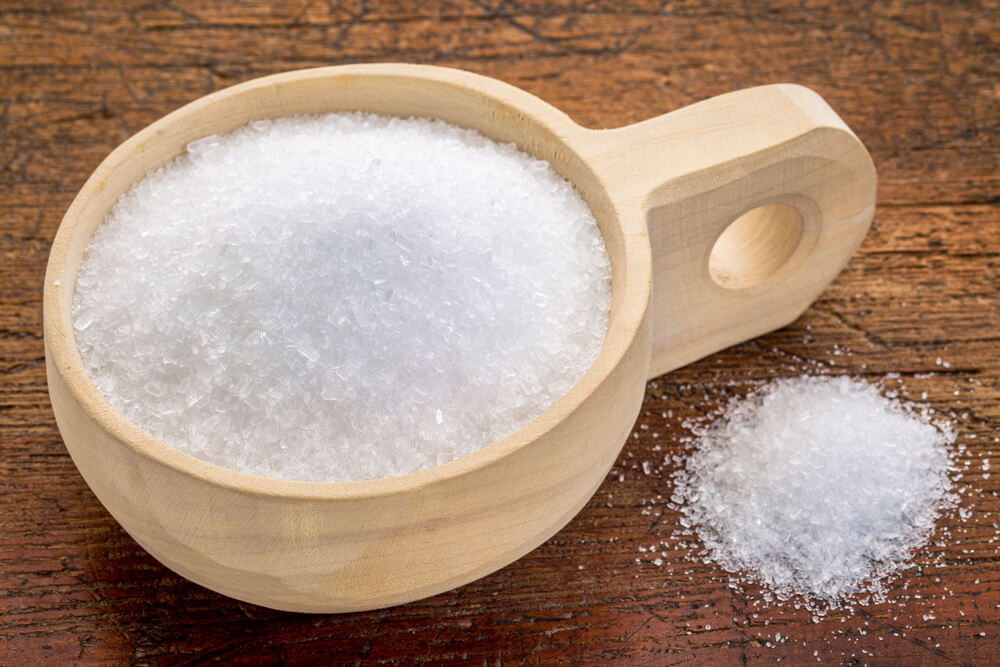
Warm water can help relax your muscles, and Epsom salt is widely-used for relieving aches. So, when you combine the two, that is, take a warm bath with Epsom salt, it makes one of the best natural remedies for cramps.
8. Electrolytes
The essential nutrients when it comes to how to prevent cramps are calcium, magnesium, sodium, and potassium, together known as electrolytes. A deficiency of these nutrients in your body can lead to cramps. Banana, sweet potatoes, and avocados contain these nutrients.
CURE 4: Supplements for Cramps
Over-the-counter medication and supplements are quite effective in dealing with cramps.
1. Vitamin supplements
Vitamins are essential to maintain the overall development of your body. Vitamin B6 is well-known for improving irritability and mood swings. A daily dose of 50 mg vitamins for cramp is recommended. Adequate levels of vitamin D facilitates the production of prostaglandins, which reduces muscle spasms. Unfortunately, there are very few food sources for vitamin D, and supplements are the most effective if you need this vitamin.
2. Chasteberry
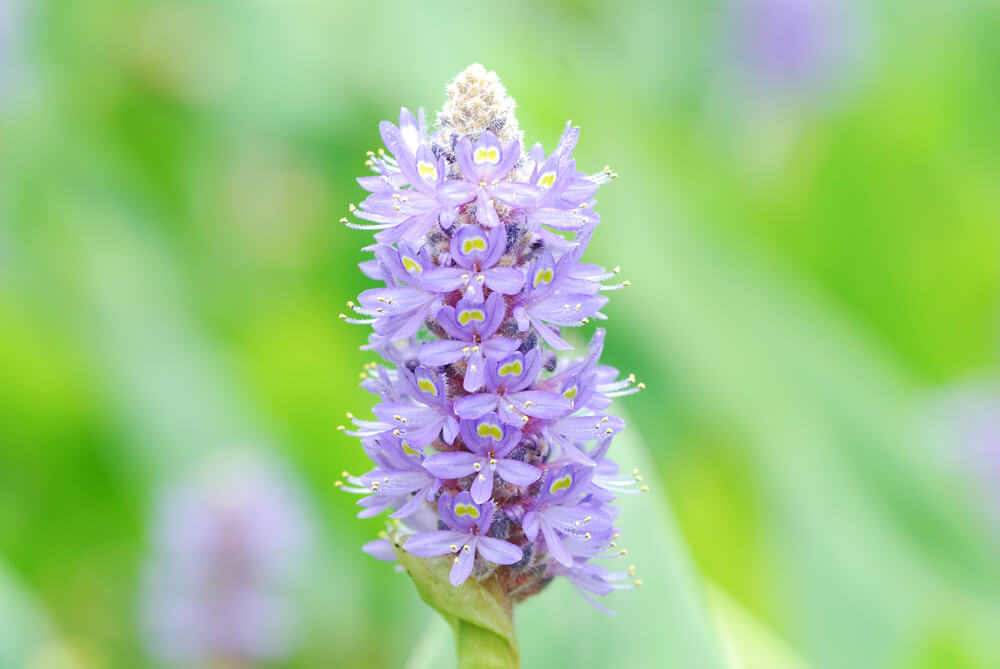
For physical PMS symptoms such as bloating, cramps, and headaches, Chasteberry is the most recommended medication. This drug doesn’t work with oral contraceptives, so if you’re taking one, consult your physician before taking this drug. It also has side effects with other hormone-sensitive drugs. The dosage guidelines given on the box should be followed.
3. Calcium Supplements
A calcium deficiency is often the cause for PMS. Calcium supplements can help reduce many symptoms, which will also reduce cramps. Adding calcium-rich foods to your diet can help, but if you feel you’re not getting enough calcium in your diet, taking a supplement is the quickest way to get the nutrients into your system. The advised dose is 500 mg per day for adults.
4. Magnesium

Wondering, how magnesium work for cramps? Magnesium deficiency is common among most adults, and this is because of the lack of magnesium-rich foods in our diet. Magnesium helps in calming the nerves, thus helping to avoid cramps.
Studies show that more than half of American women crave chocolate at the start of their period.
Foods to Avoid
If you’re suffering from cramps, these foods are best left untouched.
1. Sugary foods and candies
Eating ample candy during your period might seem like the ultimate comfort food, but that’s only going to worsen your cramps. When you’re looking to avoid cramps, any foods with too much sugar, like processed fruit juices, and candies are unhealthy choices.
2. Alcohol

The blood loss during period reduces your pressure, making you vulnerable to the side-effects of alcohol. It can also cause more blood flow, and thus increase your cramps. Not to mention that it will cause fatigue and make you feel lethargic. It’s best to stay away from alcohol during your periods.
3. Spicy foods
PMS causes bloating, and spicy foods only add to it. They are difficult to digest, and when your muscles are already spasming, indigestion or constipation will only cause more cramps. Not all spicy foods are bad. Natural and organic spices, like chili, can still be consumed, but moderately.
4. Fried foods
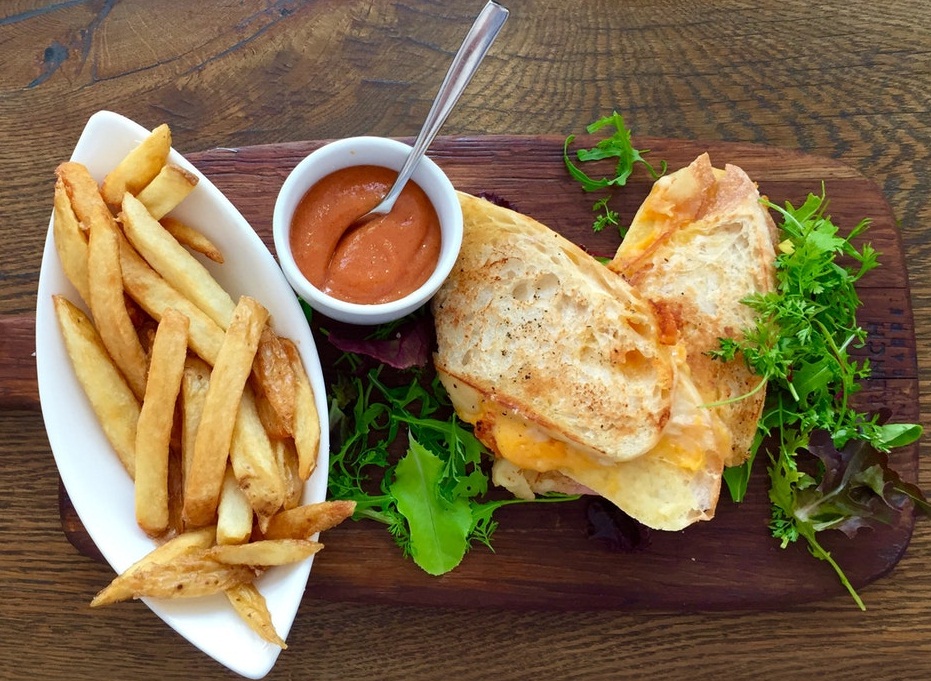
Just like spicy foods, fried foods will increase bloating and indigestion. Fried food also causes inflammation, which increases cramps. A slice of pizza for one day is beautiful, but a whole packet of chips or a full box of french fries are just a no-no. Opt for a healthy snack like peanuts that will help to reduce cramps instead.
5. Saturated Fats
There are two types of fats, good fats, and bad fats. Saturated fats fall into the wrong category. This is because they cause inflammation and increase cramps during periods. Some examples of foods filled with saturated fats are coconut oil, fatty meat, and dairy.
6. Processed Food and Carbonated Drinks
Carbonated drinks during your period are not the right choice. Pick a glass of warm water or lemon water, if you want something flavored. The same applies to processed foods, which has more fats that will make the cramps worse. All kinds of cakes, chips, and crackers come under-processed foods making them forbidden foods during the period.
Can Cramps Be Avoided?
While there’s very little, you can do to prevent the painful cramps. There’s still a variety of tried-and-tested methods that can help minimize the pain and deal with discomfort. Here are some tips for a temporary cramp relief you can try at home.
- In a glass of warm water squeeze a few drops of lemon, and drink it first thing every morning. Do this daily, or for a week right before your periods are due. This will help flush out the toxins, and also reduce bloating.
- Taking warm baths is an excellent way to relax the muscles of the uterus, thus resulting in less cramping.
- Ask your mother or grandmother for tips on how to avoid cramps. Every woman has period cramps, and asking your mother/grandmother can get you a plethora of home remedies that can help you too.
Cramps are more severe at the start of a period and can gradually decrease as you grow older.
At least 1 in 4 women experience severe cramps that require medication to help with the discomfort, according to a report by NCBI. You should consult a doctor if the pain is severe enough to constrict you from doing your daily activities, and results in hefty bleeding. Otherwise, cramps, though familiar, are treatable with home remedies. The most common and preferred method to treat cramps is by applying a heating pad on your abdomen or massaging the area that hurts.
There are two types of menstrual cramps, or dysmenorrhea: primary dysmenorrhea, and secondary dysmenorrhea. Primary dysmenorrhea is period pain, while secondary dysmenorrhea is a disorder of the reproductive organs.
Also Read: Natural Remedies To Relieve Menstrual Cramps (Dysmenorrhea)
FAQs
1. What to take for cramps?
Oral contraceptives have been known to not only help with cramps relief but also reduce the flow. Though this treatment helps most women, you still need to consult a doctor to see if it can help with your particular case.
2. What to do for cramps?
If you have a very heavy or irregular flow, finding the cause of the irregular flow, and treating it can also give cramps relief.
3. What is good for cramps?
When suffering from cramps, mild exercise can help a great deal. It might not sound like such a good option when you don’t even feel like moving, but exercise can improve the blood flow.
3. What helps cramps?
Applying heat on the area that hurts is a popular way of treating any cramp. Take a heating pad, and place it on your lower belly and lower back. This will help alleviate the pain.
4. What are the symptoms of PMS?
As per a report from the National Association of Premenstrual Syndrome, there are 150 identified symptoms of PMS. The most common ones include bloating, mood swings, feeling out of control, fatigue, depression, anxiety, and more.

